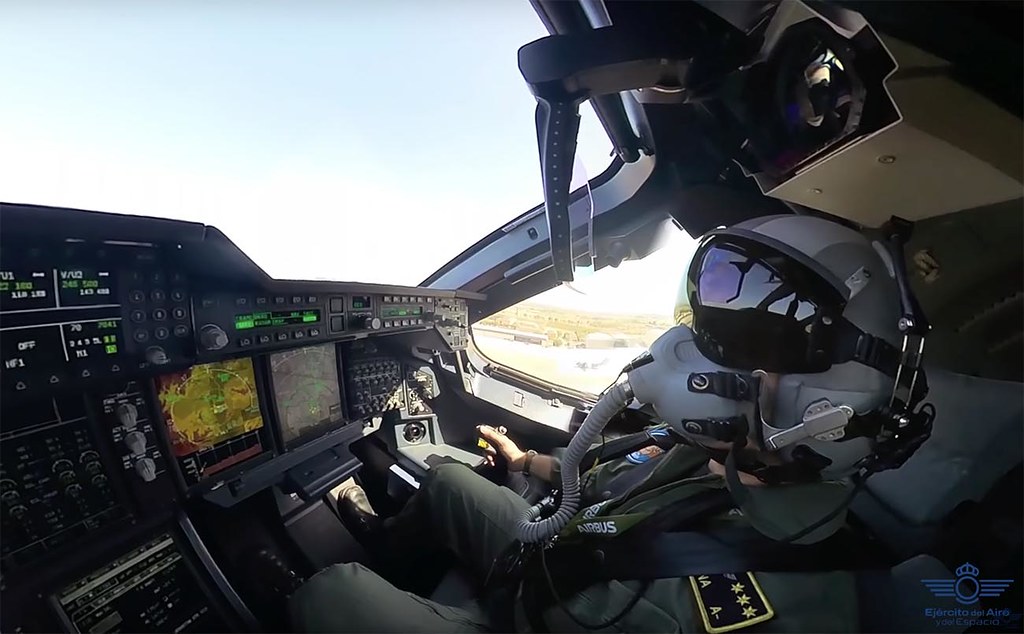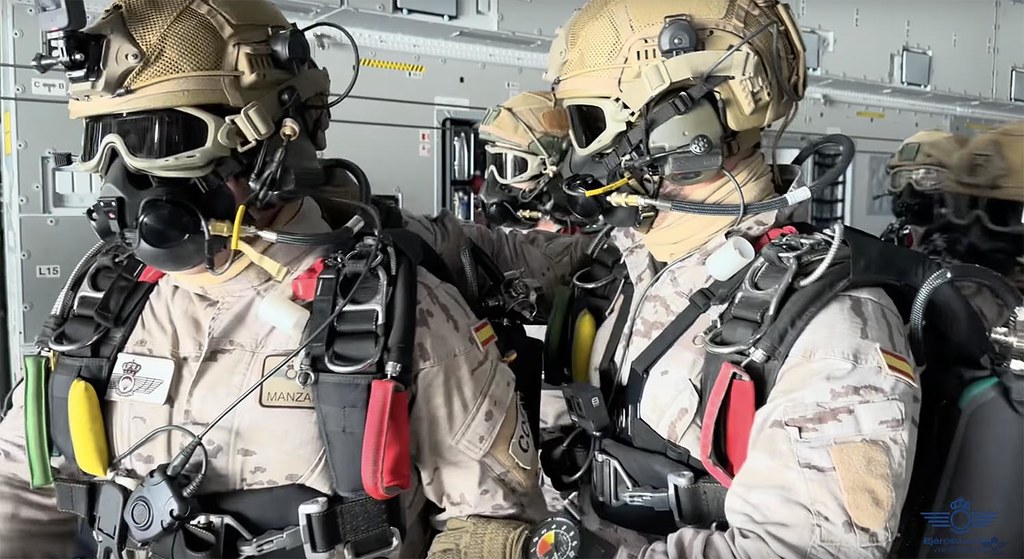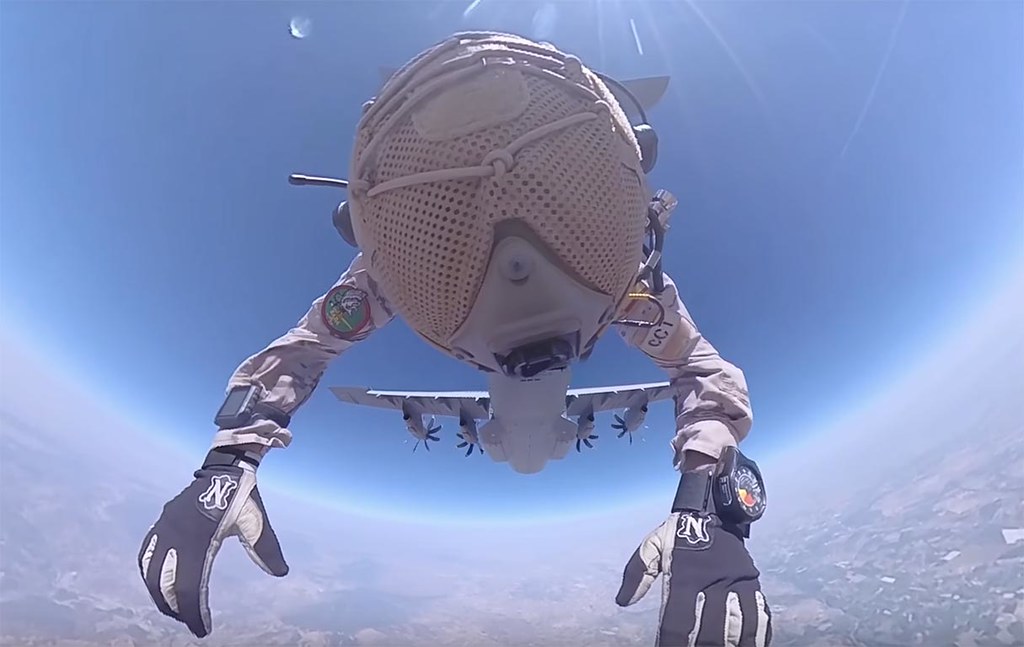First HAHO from a Spanish A400M, a jump for infiltration into hostile territory
The Spanish Air Force has achieved a new milestone with its Airbus A400M Atlas transport aircraft, framed in Wing 31.
According to the Spanish Air Force has reported today, it has carried out the first paratrooper drop in HAHO (high altitude, high opening) mode from one of its A400M , a jump starring six paratroopers from the Air Deployment Support Squadron (EADA).
The members of the EADA jumped to a height of 18,000 feet (5,500 meters) "and thus have become pioneers in this mode of launching from that platform," the Spanish Air Force says. "The opening of the parachute of the first launcher was carried out at 16,500 feet, which has determined that the jump be in HAHO mode, that is, launch at high altitude and open at high altitude."

These jumps are risky and require high preparation and adequate equipment, due to the extreme conditions in which they are carried out, as the Air Force explains: "The lack of oxygen requires that both the jumpers and the aircraft crews need to inhale breathable oxygen, in order to avoid hypoxia.This forces the aircraft, in addition to the load supervisors and mechanics, to have the assistance of an oxygen technician and a physiological training technician."
The Spanish Air Force has pointed out that this new milestone "is the result of prior accreditation work and sharing of procedures between Wing 31, with its T.23 platform (military nomenclature of the A400M), and the EADA, with its jumpers and jump leaders. This jump had been previously tested at lower altitudes, where oxygen was not required, to ensure the efficiency and safety of the procedures to apply."

In 2015, the Spanish Army said that the Parachute Brigade (BRIPAC) and the Special Operations Command (MOE) carry out HAHO and HALO jumps (high altitude launch and low altitude opening) up to a height of 24,500 feet (8,000 meters). The Army then pointed out that in the HAHO mode "the opening of the parachute is carried out just when leaving the plane and allows the jumper to navigate great distances to the landing zone. During the flight time, which can be up to 30 minutes, the jumper suffers low temperatures, around -20ºC. For this, he wears special equipment for the cold."
In 2020, Defensa magazine pointed out that the distance that a parachutist can travel in a HAHO jump can exceed 60 kilometers, which is why this modality is widely used in infiltrations into hostile territory by special operations groups.
You can see here the video published today by the Spanish Air Force about the HAHO jump of the EADA from the A400M:
And here we can see some screenshots of the video, with some curiosities. In the first one we see an atypical image: one of the crew of the A400M with an HGU-55 helmet that we have seen many times in the pilots of the Spanish EF-18M fighters. A necessary piece of equipment in this case due to the scarcity of oxygen at that jump height, since the plane is not pressurized.

Another of the crew members of the A400M, in this case one of the assistants who are in the cargo bay with the jumpers. He also wears an HGU-55 helmet with oxygen equipment.

The EADA paratroopers before the jump. They are also equipped with oxygen equipment to avoid hypoxia.

The oxygen technician checks the oxygen bottles of the EADA paratroopers before the HAHO jump.

The moment of the opening of the paratrooper of one of the EADA members shortly after jumping from the A400M. Near him we see another EADA member who is still in free fall.

One of the EADA members right after the jump, specifically a CCT (Combat Controller). On his left wrist he wears an analog altimeter, and on his right wrist he wears what appears to be a digital altimeter. The gloves, obviously, are to avoid freezing your hands due to the very low temperatures at that altitude.

|
Don't miss the news and content that interest you. Receive the free daily newsletter in your email: |
- Most read
- The 'hole' without civil flights around Paris during the opening of the Olympic Games
- Stunning footage of the F-15QA Ababil in flight recorded from its cockpit
- The firearms used by the Pontifical Swiss Guard, the smallest army in the world
- The most distant deployment of the Spanish Air Force in Australia and New Zealand
- Eurofighter vs F-35: the opinions of professional pilots on these advanced fighters
- The first photo of an F-16 fighter with Ukrainian insignia and the details it has revealed
- This is the driver station of an M1 Abrams tank and the impressive start of its engine

 ES
ES







Opina sobre esta entrada: